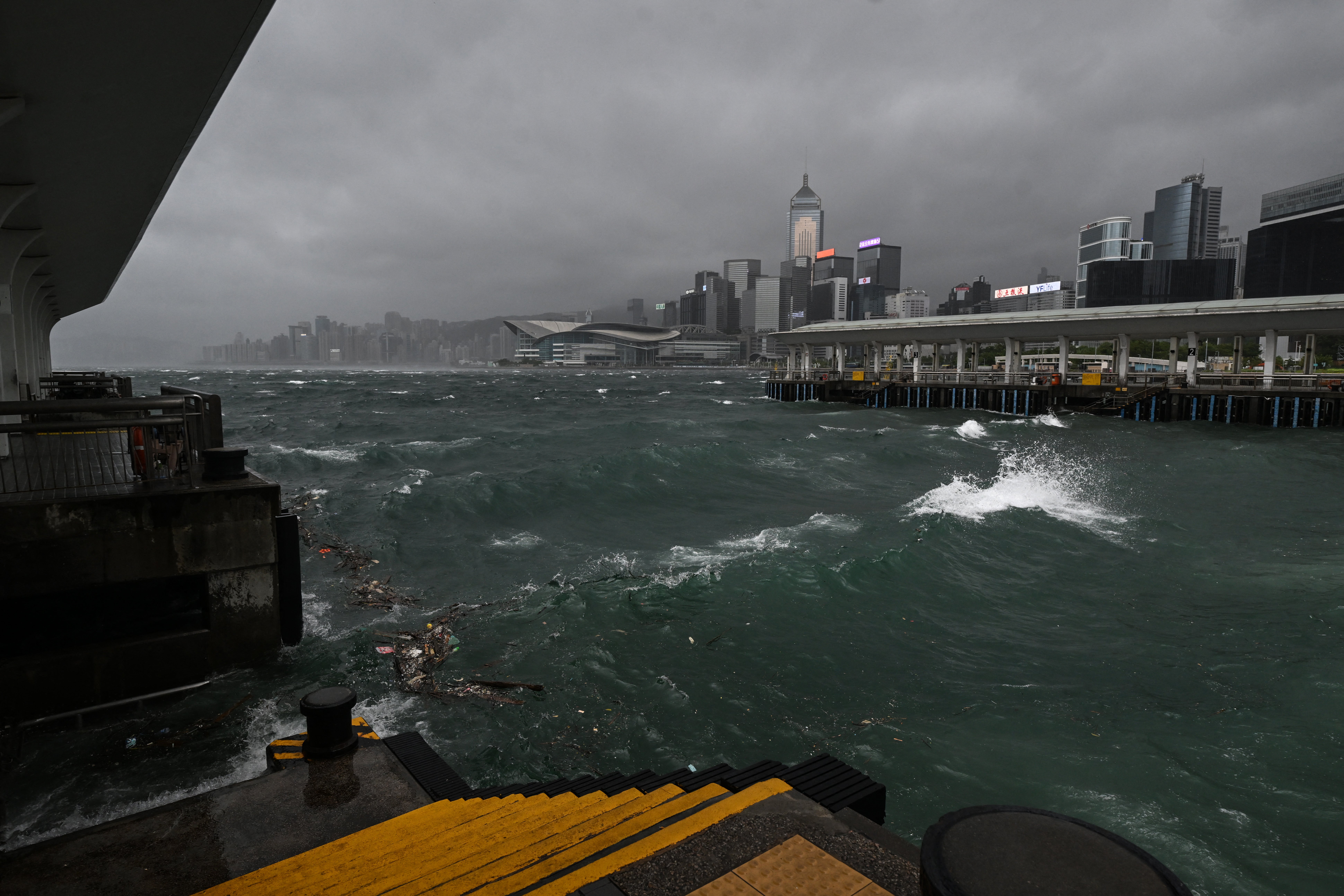
Multiple storms and a severe heatwave have swept across China, killing dozens, damaging infrastructure and disrupting travel as authorities brace for more heavy rain and rising temperatures.
Typhoon Wipha made landfall in southern Guangdong province on Sunday evening, battering cities like Yangjiang, Zhanjiang and Maoming with winds of over 118kmph and dumping torrential rain that uprooted trees, triggered landslides and left thousands without power.
The system also disrupted travel across the Pearl River Delta, grounding more than 900 flights in Hong Kong, Macau, Shenzhen and Zhuhai.
Hong Kong was briefly placed under its maximum typhoon warning as gusts exceeded 167kmph and scaffolding collapsed in parts of the city. Authorities reported 471 fallen trees and at least 26 injuries linked to the storm.
Hong Kong's airport authority said 80,000 travellers were hit by the rescheduling of 400 flights forced by the typhoon.
By Sunday night, the typhoon weakened to a severe tropical storm as it moved inland, but the threat of flooding and landslides persisted across southern China, including Guangxi and Hainan.

Local forecasters warned that the system could re-intensify over the Gulf of Tonkin before making landfall in northern Vietnam.
Meanwhile, torrential rain continued across parts of China already inundated by earlier storms. In July alone, flooding, landslides and storm surges have affected millions across coastal provinces, including Guangdong, Fujian and Guangxi.
A separate set of storms triggered flash floods in Henan and Gansu last week, where rivers burst their banks, buildings collapsed, and at least seven people were killed or reported missing.
The Ministry of Emergency Management said China’s first-half disaster toll included at least 307 people dead or missing, over 23 million affected residents, and more than $7.6bn in economic damage, with the bulk caused by weather-related events.
While southern regions battled floods, other parts of China faced record-breaking heat. Temperatures soared to 46C in Xi’an this month, with surface readings exceeding 70C in some cities.

Red alerts were issued in provinces including Shaanxi and Yunnan, prompting cooling shelters and curbs on outdoor work as electricity demand hit historic highs.
The National Meteorological Centre has warned of continued extreme weather through July and August, China’s typical peak season for typhoons and floods.
Chen Min, China’s vice-minister of water resources, warned at a news conference earlier this month that the “global trend of climate warming is evident” in China.
“In recent years, more frequent, intense and widespread extreme weather events have led to more abrupt, severe and abnormal disasters such as heavy rainfall, floods and droughts,” he said.
Meanwhile, monsoon continued to create mayhem in South Korea in the east and Indian subcontinent in the west.
At least 18 people have died and 9 were missing after five days of record-breaking rain triggered flash floods and landslides in South Korea. Over 14,000 people have been evacuated nationwide, and the government has dispatched thousands of troops for recovery work. In Gapyeong, one man died after calling his wife to say his car was being swept away, while entire villages in Sancheong were buried in mudslides.
In India, intense rainfall and landslides in Himachal Pradesh and Uttarakhand have killed at least 140 people since late June. Roads, bridges and homes have been swept away in mountain districts, with cloudbursts triggering deadly flash floods.
In Nepal, a glacial lake outburst on the Chinese border on 8 July sent a wall of water downstream, destroying the Friendship Bridge, submerging vehicles, and killing at least nine people. Nineteen others remain missing.
Pakistan has also suffered one of its deadliest monsoons since the devastating floods of 2022. More than 200 people have died, including dozens of children, and over 560 have been injured in rain-related incidents since June 26, with Punjab province the worst affected.
South Korea flood death toll rises to 18 as southern regions battered by record rain
Death toll from South Korea rains rises to 16
Typhoon Wipha: Hong Kong issues highest storm alert after over 200 flights cancelled
‘Car is being swept away,’ man’s last call to wife as South Korea hit by heavy rain
‘Never again’: Regulatory reform pledged to prevent repeat of water bill hikes
Ofwat scrapped to end water regulation that ‘failed customers and environment’







